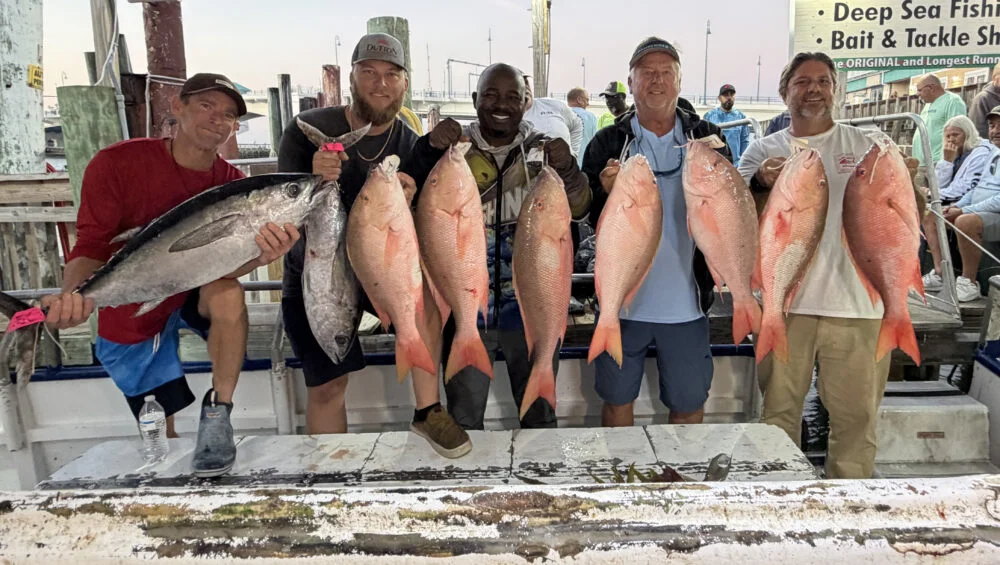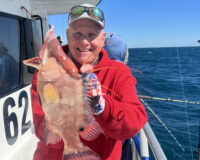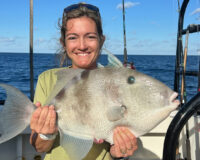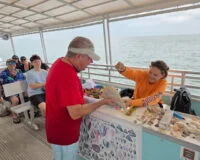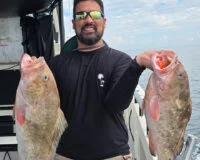Inshore Fishing Report
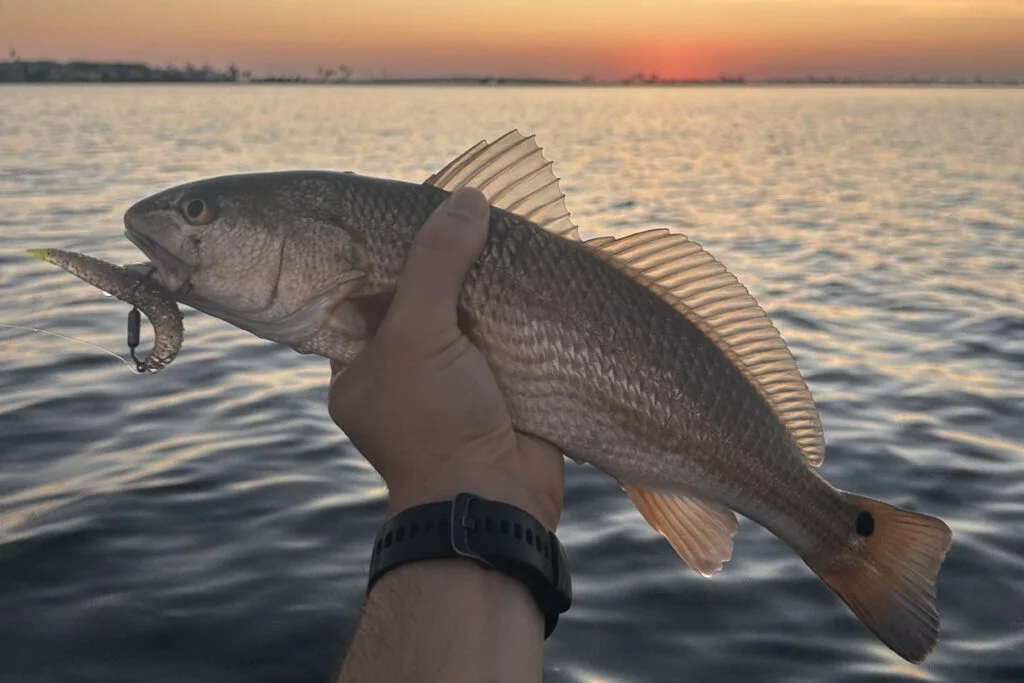
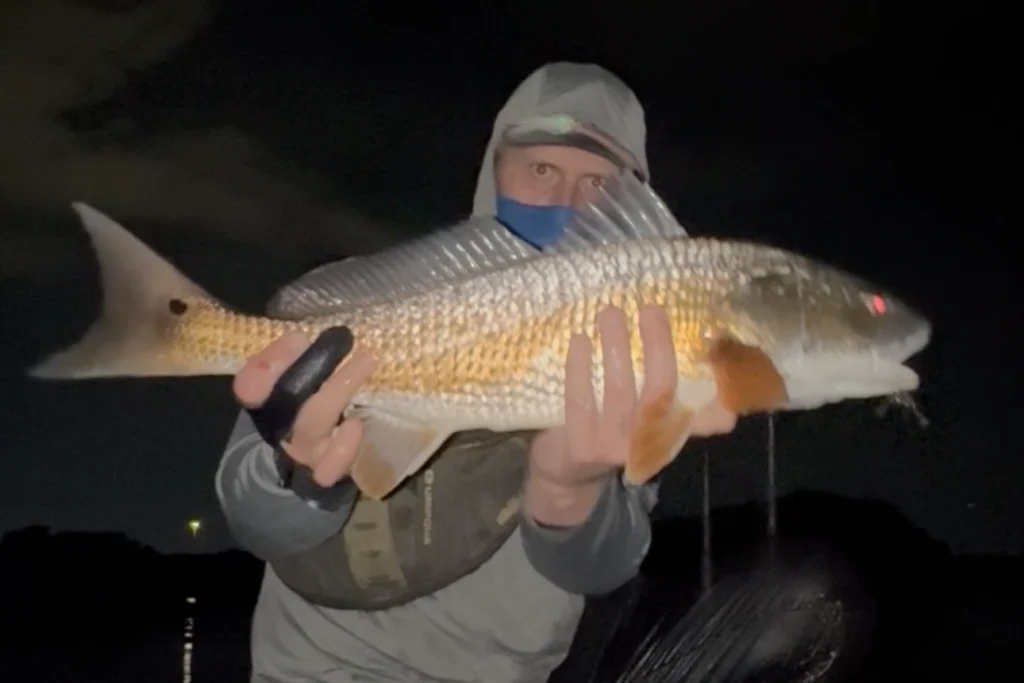

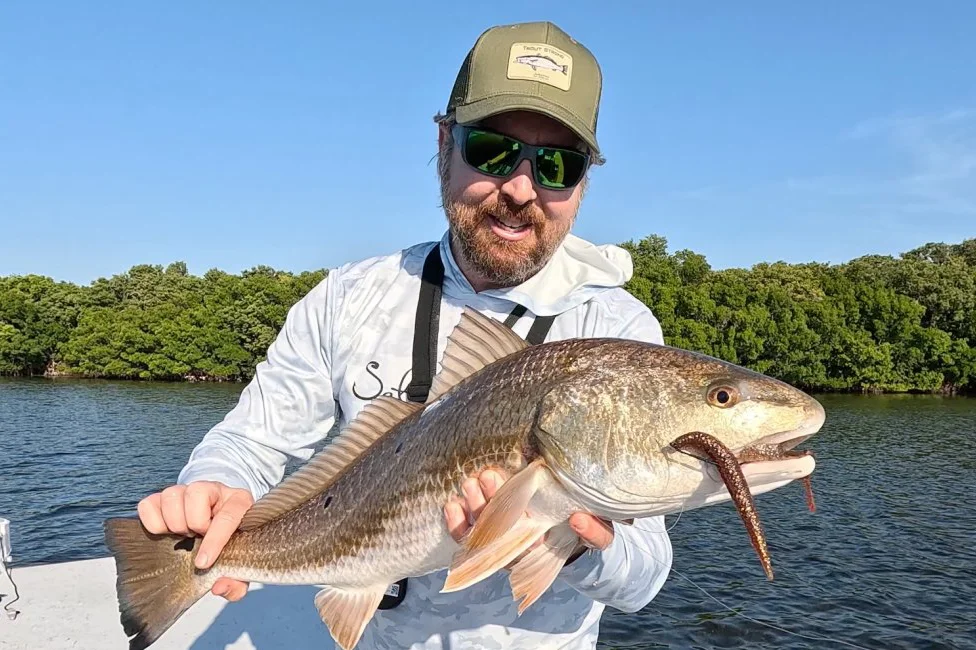

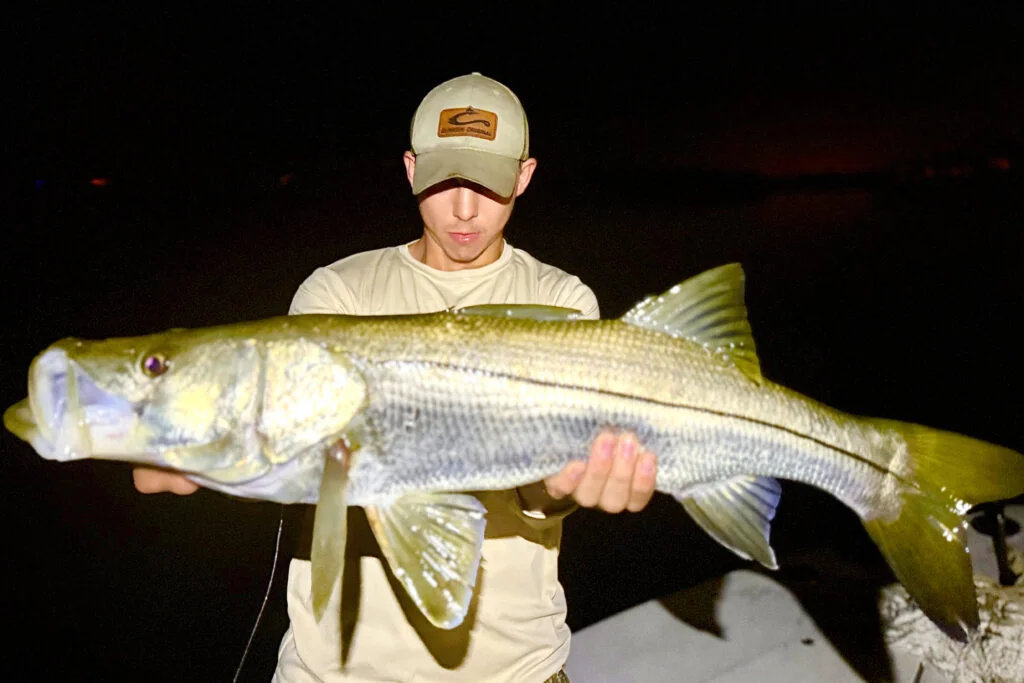
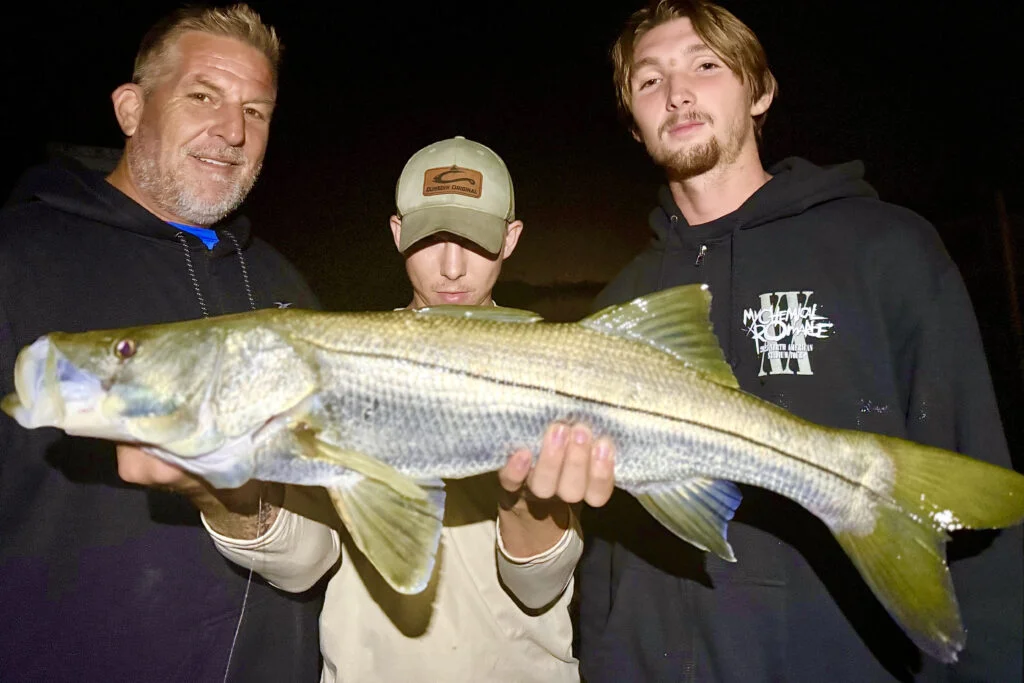
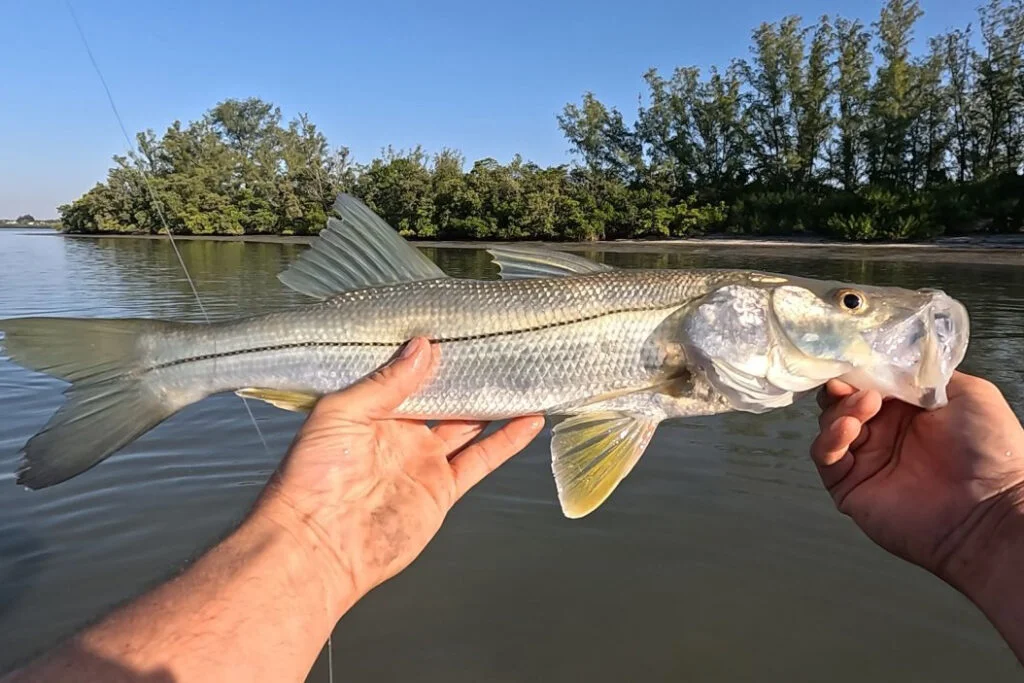

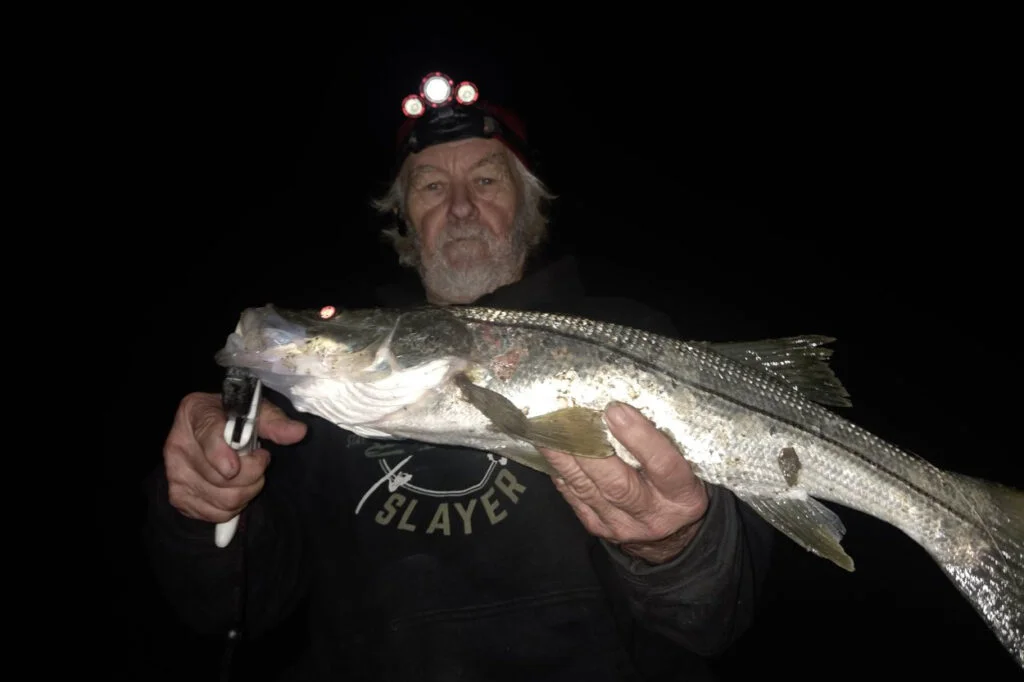
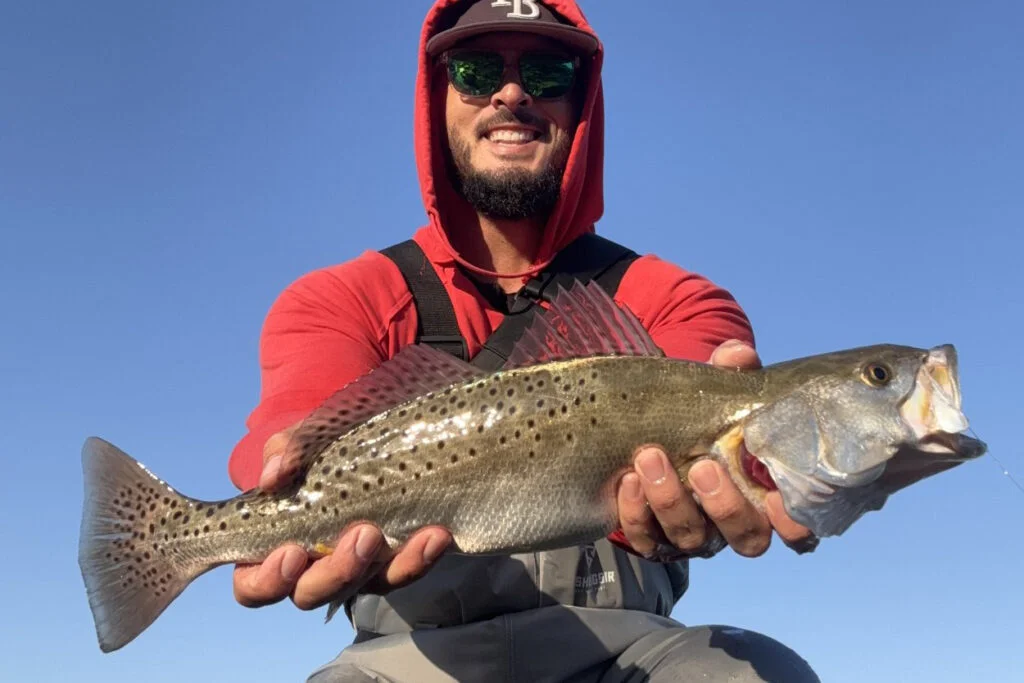

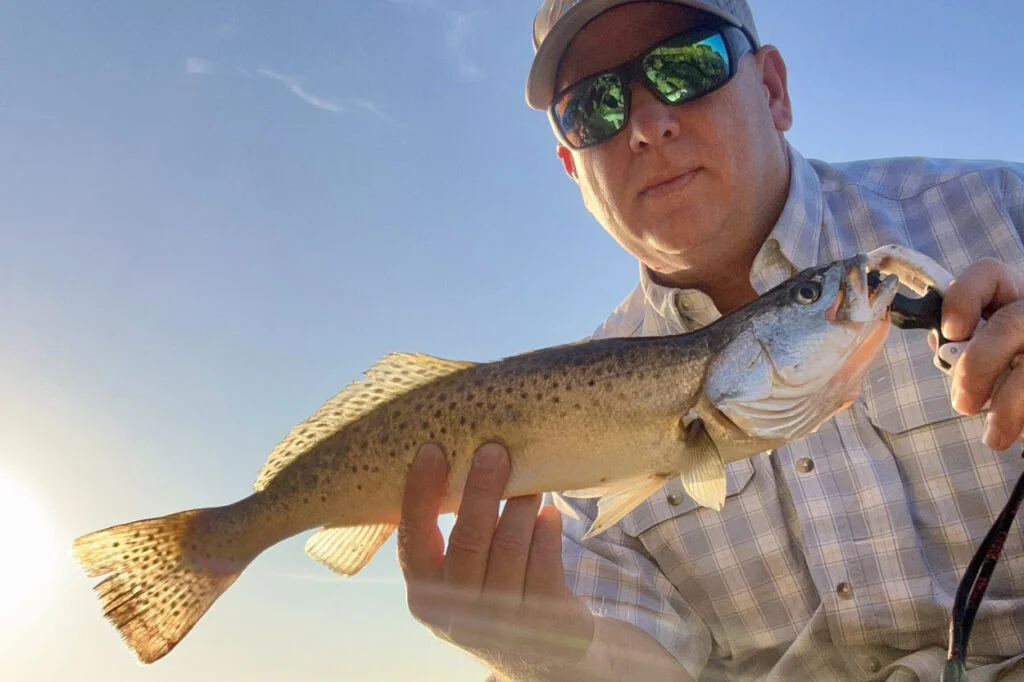
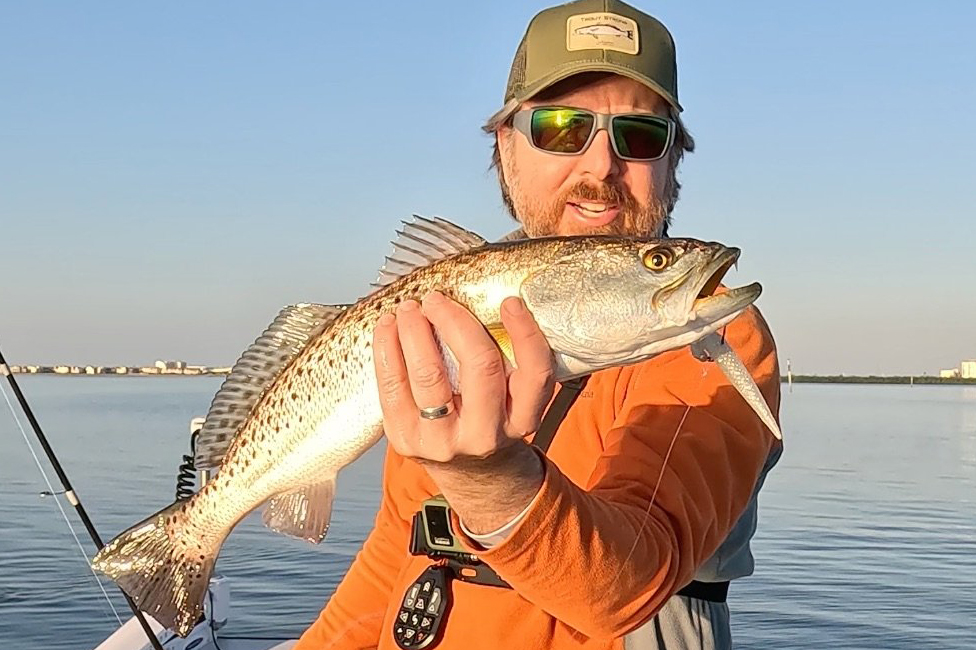
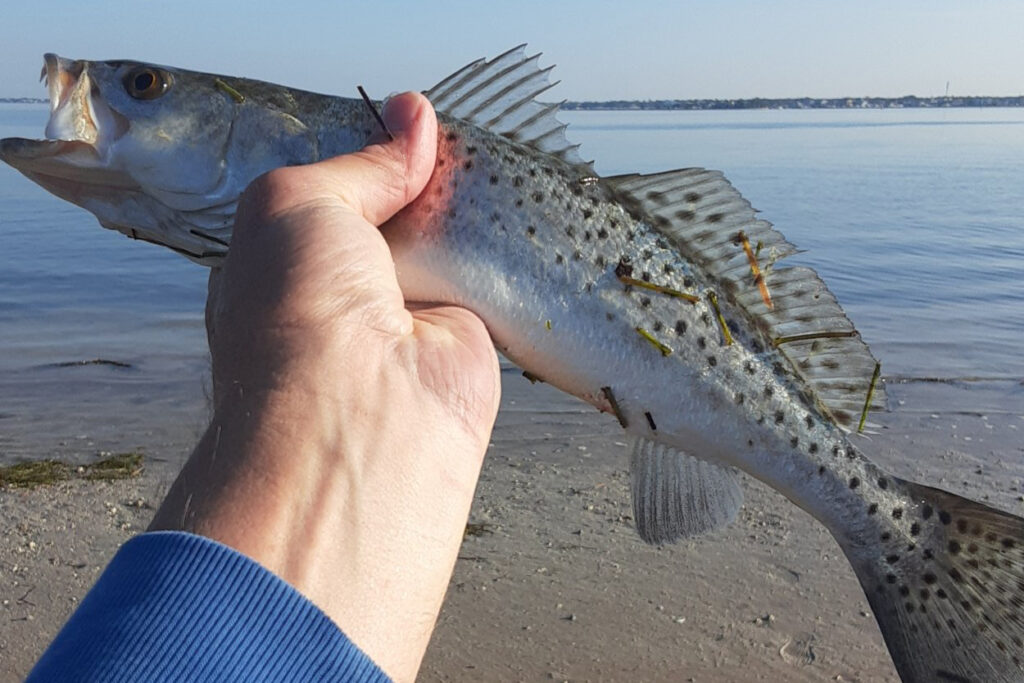
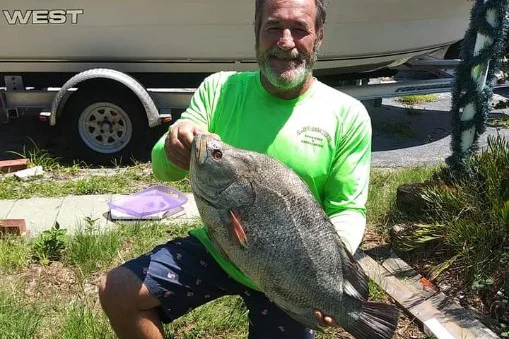
Trout — Speckeled trout have been spreading across the flats and sliding shallower with cooling trend overall. Expect action from the beaches and passes to the upper bay—edge lines, grass flats with sand potholes, and oyster bar points are all producing. Free‑line live shrimp or small whitebait on light leaders, or swim a 3–4″ soft plastic paddletail on a 1/8–1/4 oz jighead. Night sessions around dock and bridge lights have been outstanding—work the up‑current edge of the light cone and let the current do the presentation.
Redfish — The red bite remains steady with small pods roaming flats, mangrove edges, and island points. On slower tides, soak cut baits (mullet, ladyfish, pinfish, threadfin) in ambush lanes. When mullet schools push through, swap to a gold spoon or weedless jerk shad and cover water. At night, bump soft plastics along bottom around lighted docks.
Snook — Snook are back in the upper bays and back bay waters in the creeks, rivers, and bayous. They’re choosy on weak flow; fish the solunars, find shade and moving water, and keep baits natural. Live shrimp, small pinfish, or a downsized jerkbait will coax bites. Target sun‑warmed shoreline pockets with current seams.
Flounder — We’re seeing a consistent trickle on sandy edges, potholes adjacent to structure, and the beach troughs. Hop a 1/4 oz jig with a strip of cut bait or a shrimp/soft plastic tight to bottom—slow is the program.
Sheepshead — Plenty around hard structure—docks, piers, bridges, jetties—especially where barnacles and oysters are thick. Scale down: small hooks, light leaders, tiny bits of shrimp, fiddlers, or oyster crabs. Let the bait sit tight to the piling.
Mackerel — Spanish are less prolific but a few are still ripping through deeper edges, jetties, and bridge spans where bait stacks. Fast, flashy metals and spoons shine; with live bait, use long‑shank hooks and keep leaders light for more strikes.
Fishing Tips
- Snook: Use live baits like greenbacks, threadfins, and shrimp, or try flair hawks and soft plastics at night.
- Redfish: Look for them around mangroves, oyster bars, and flats, and use dead baits during higher tides.
- Trout: Target them with soft plastics, white bait, and shrimp around deeper flats and potholes.
- Tarpon: Target them during the full moon with crab flushes, making it an ideal time to target them.
- Flounder: Find them near sandy bottoms and structures, biting on bottom baits.
- Pompano: Be prepared to move frequently to stay on their bite.
- Sharks: Use big dead baits in areas with moving water.
Help spread the word about what to do if you hook or entangle a bird. Never cut the line; instead, reel in the bird carefully to dehook and release it. If you accidentally hook a dock, break the line at the hook to avoid leaving any line in the water. Seabirds with fishing lines hanging from them are becoming more common, and this could lead to the closure of fishing areas.
Rising concerns about bird entanglements might result in closing fishing spots, impacting the few available locations around Tampa Bay from shorelines, docks, bridges, or piers. Learn more in our podcast with Salt Strong: https://www.saltstrong.com/articles/shutting-down-fishing-at-busy-pier/.
NEarshore Fishing Report
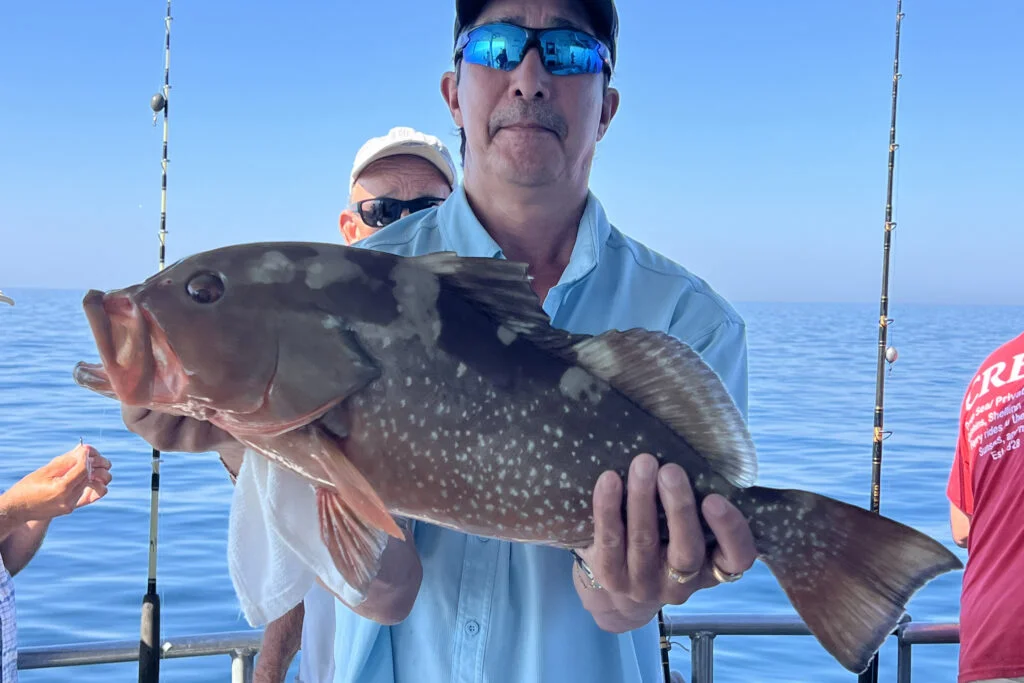

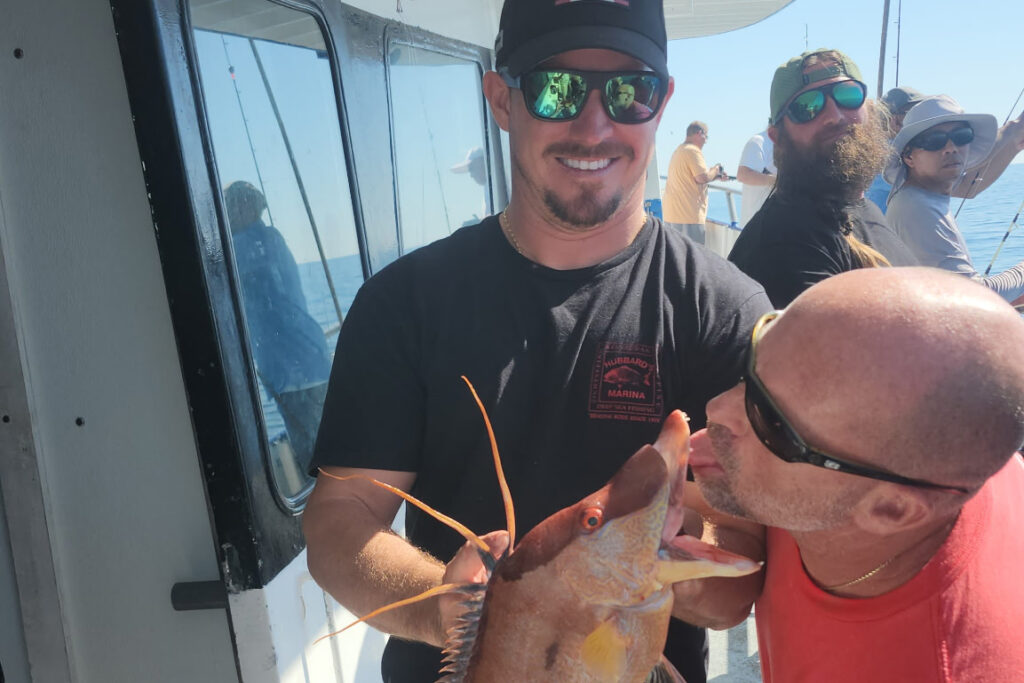
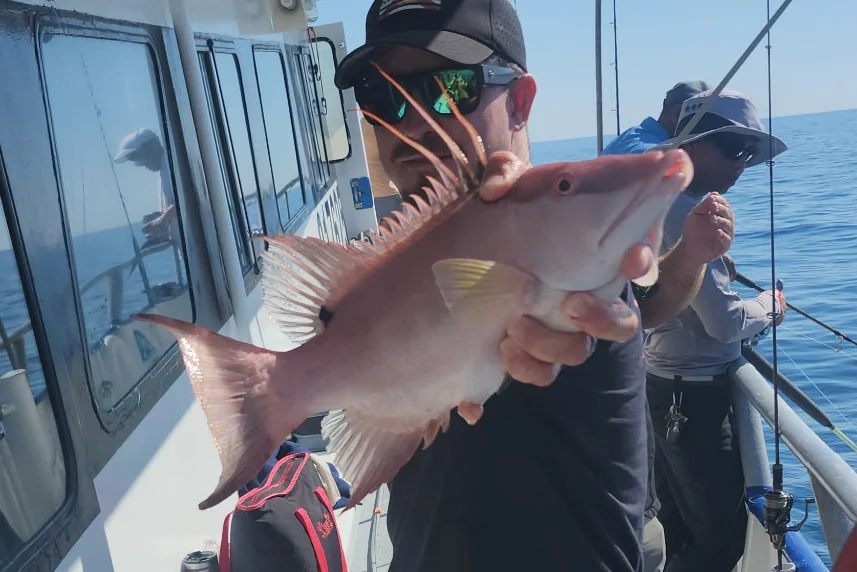
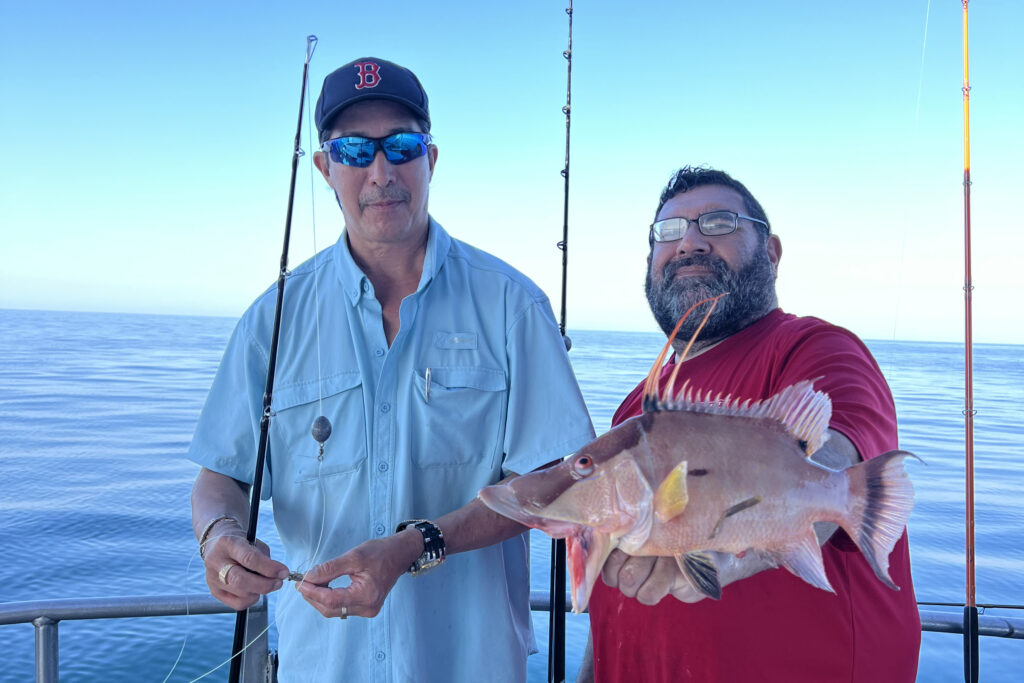
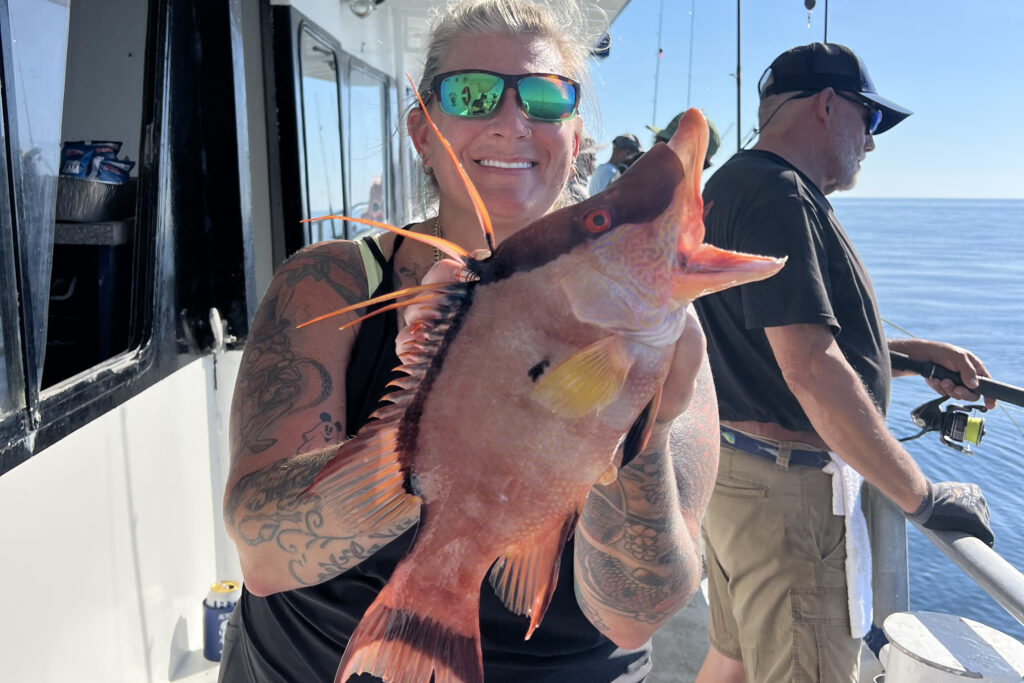
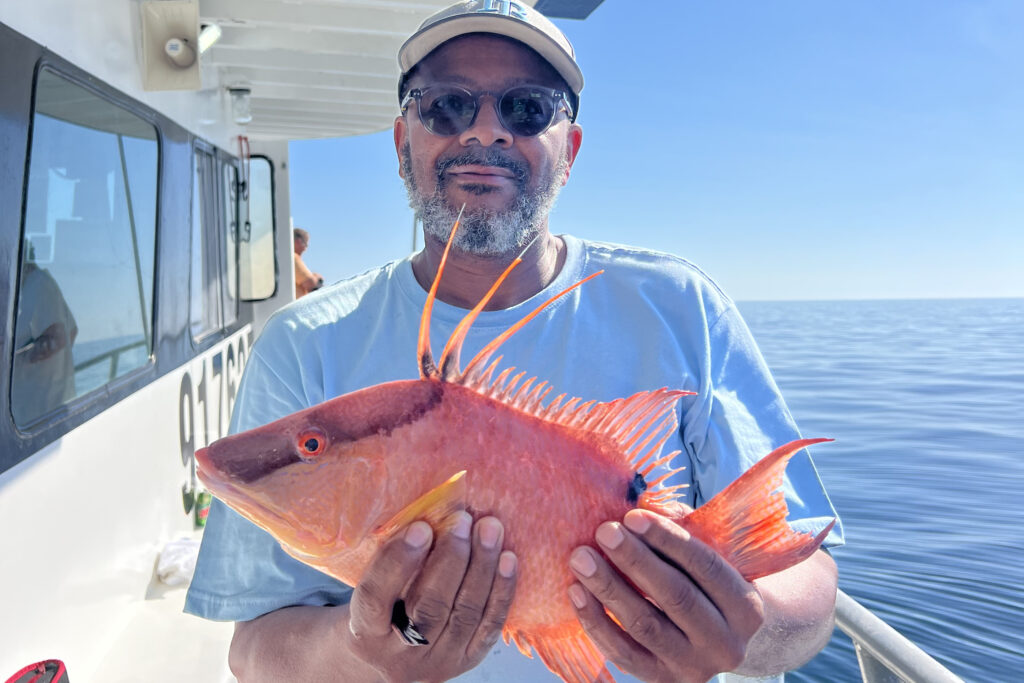
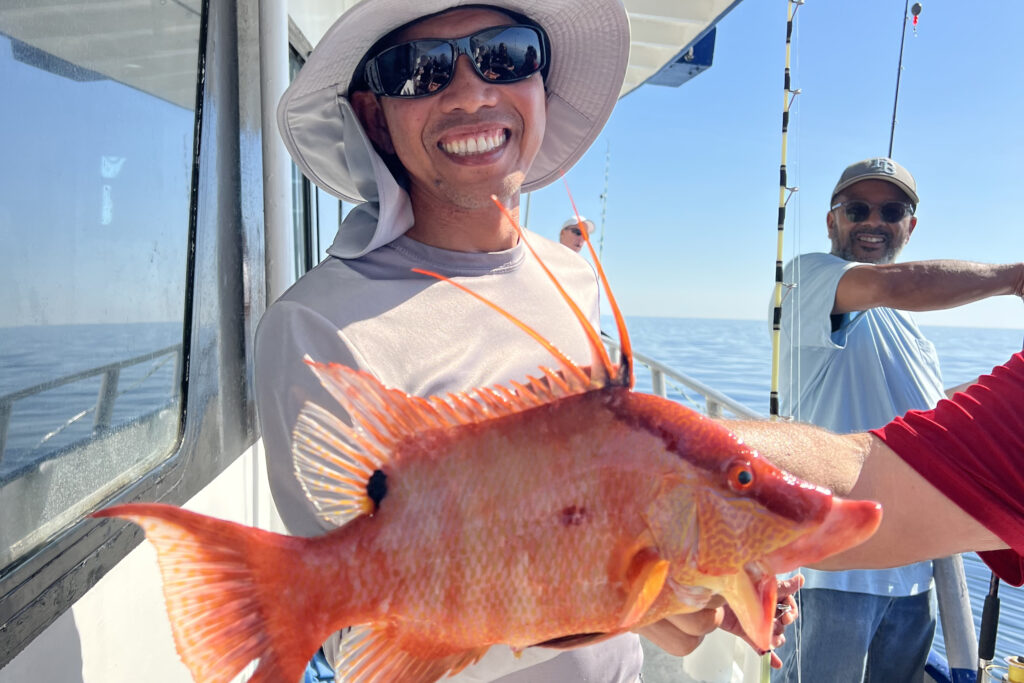

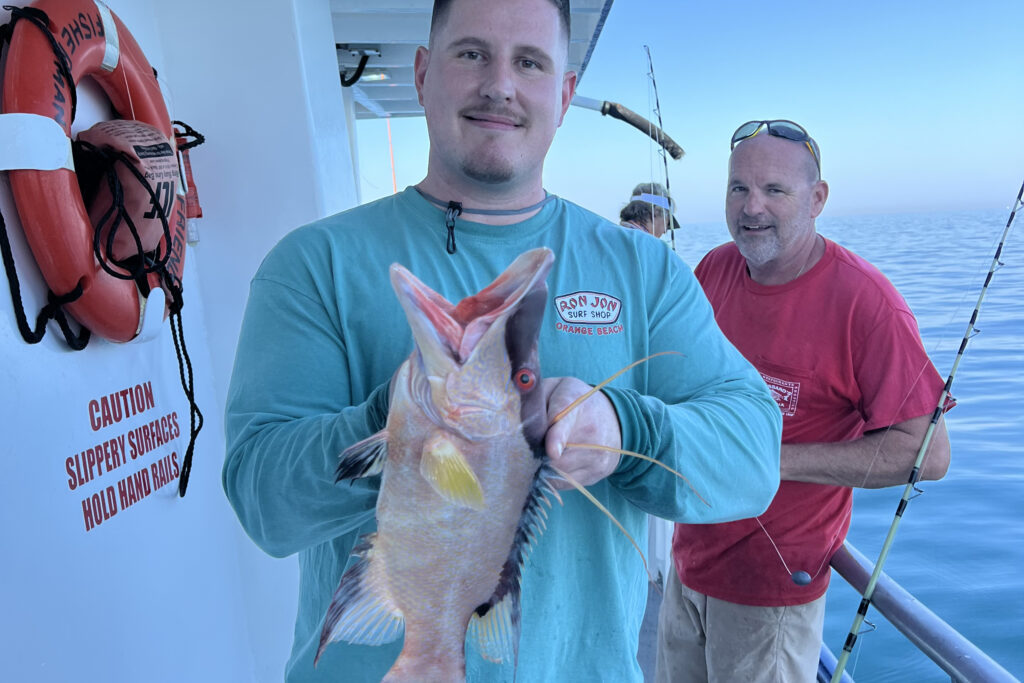
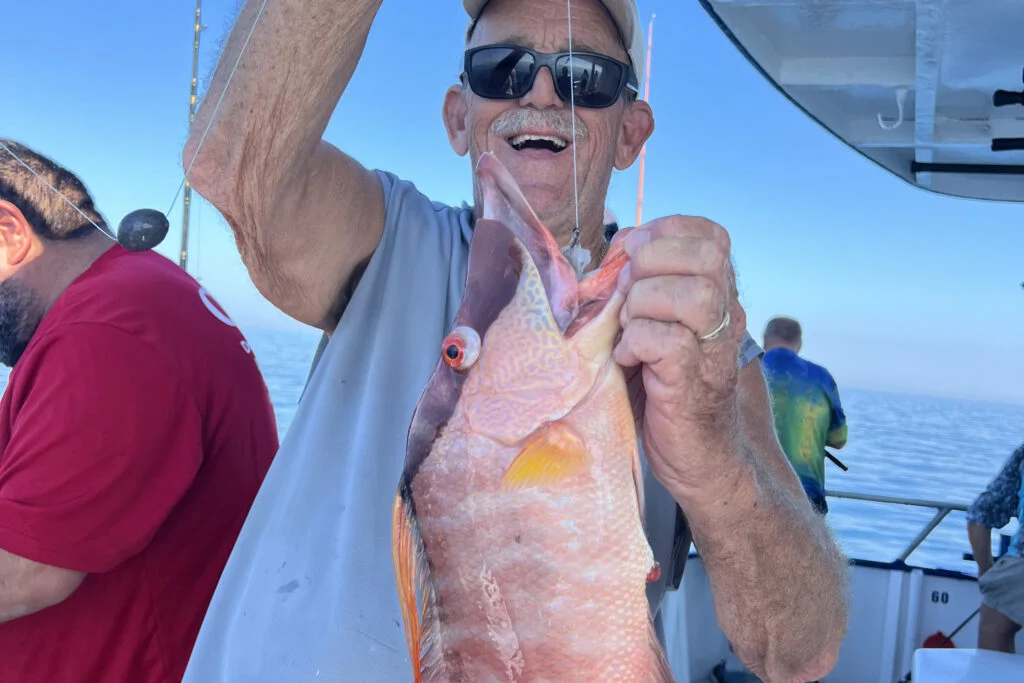
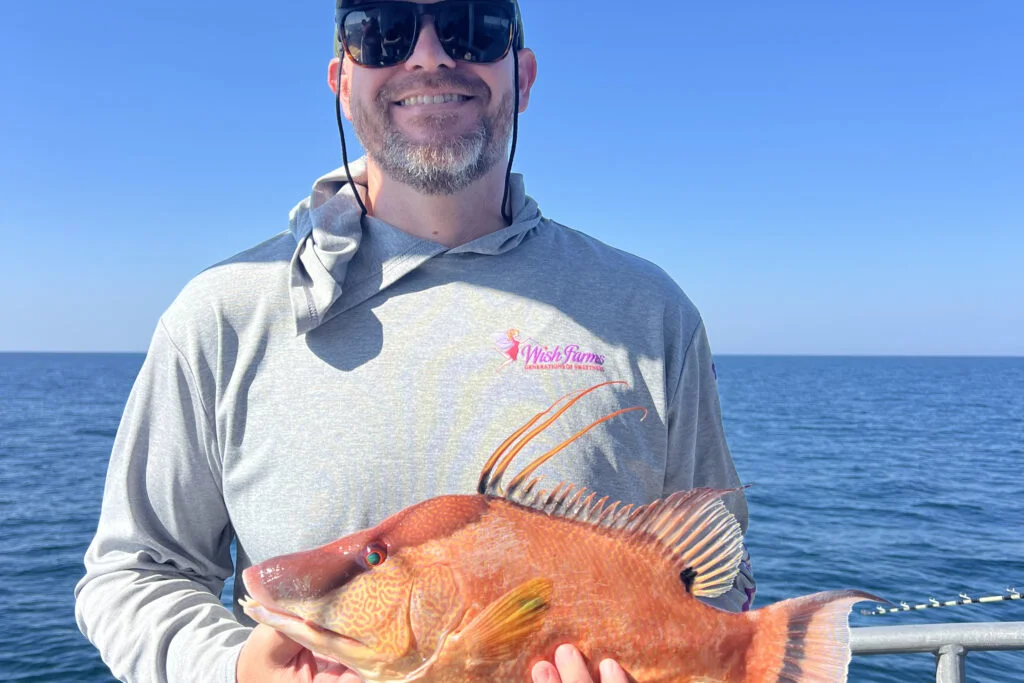
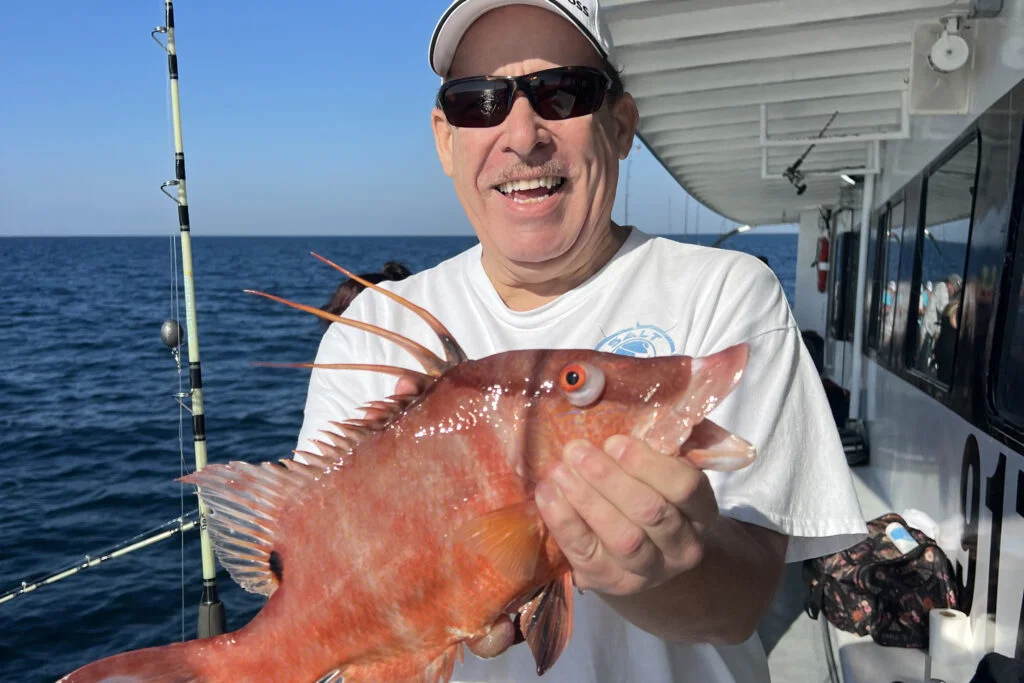

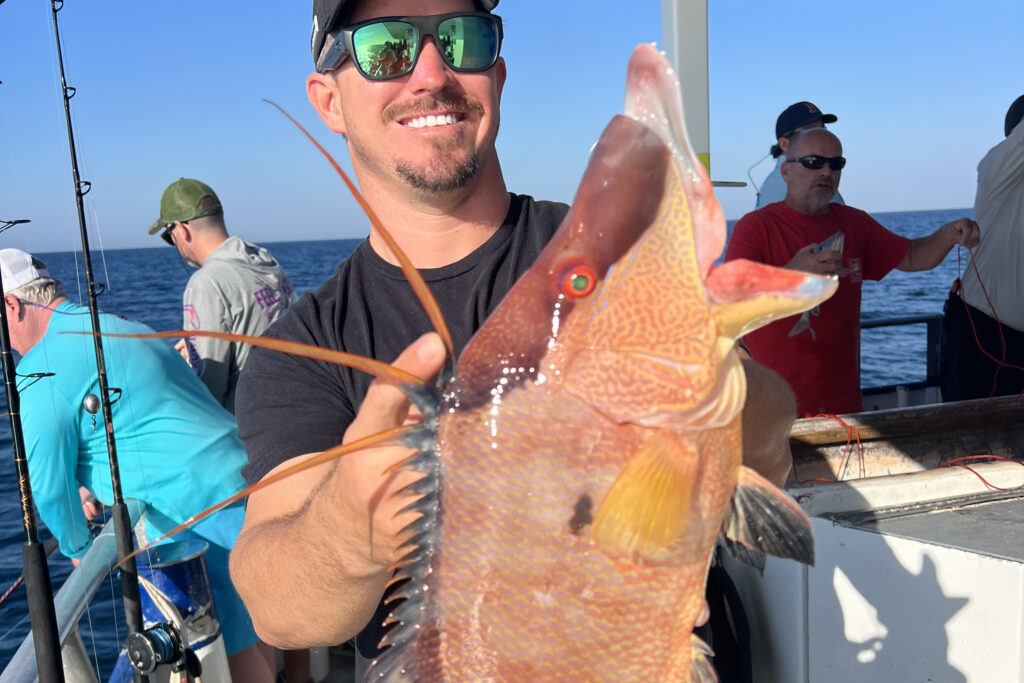
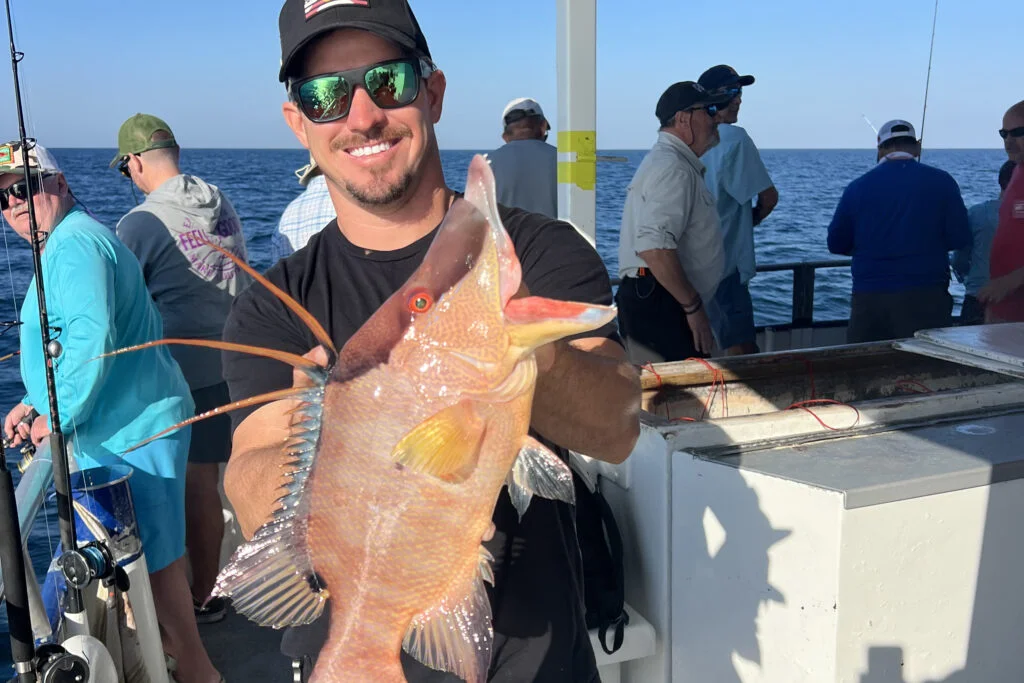
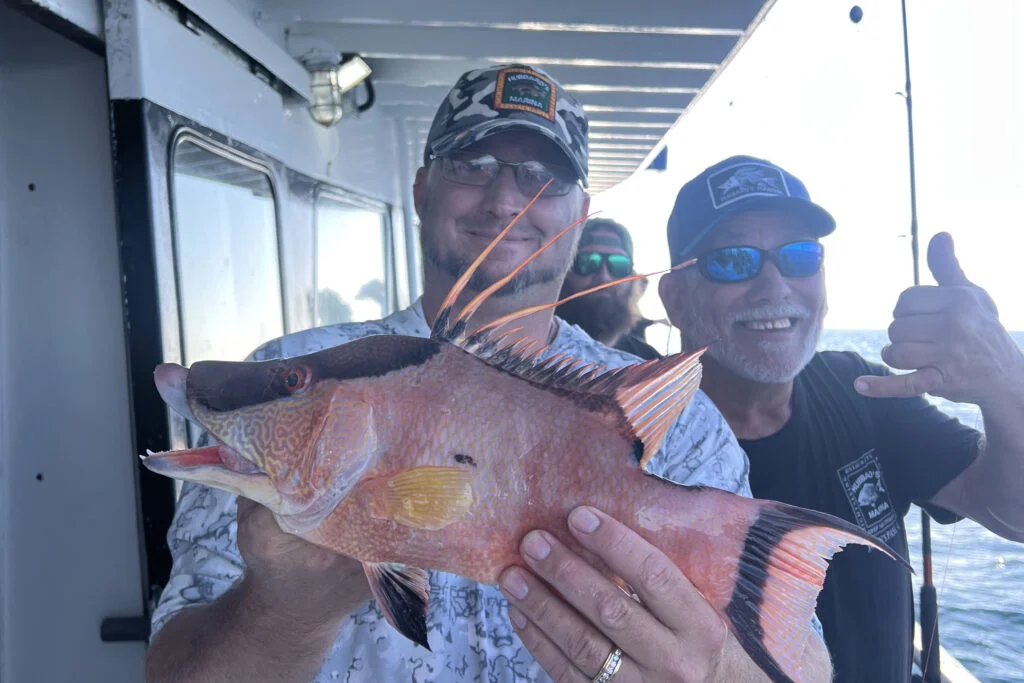


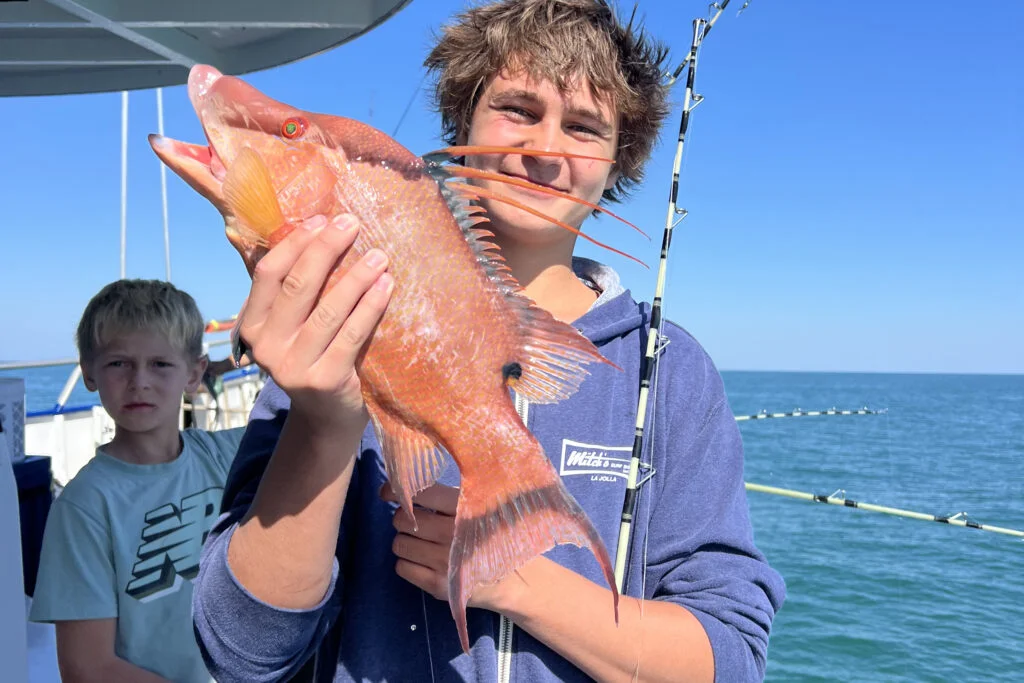
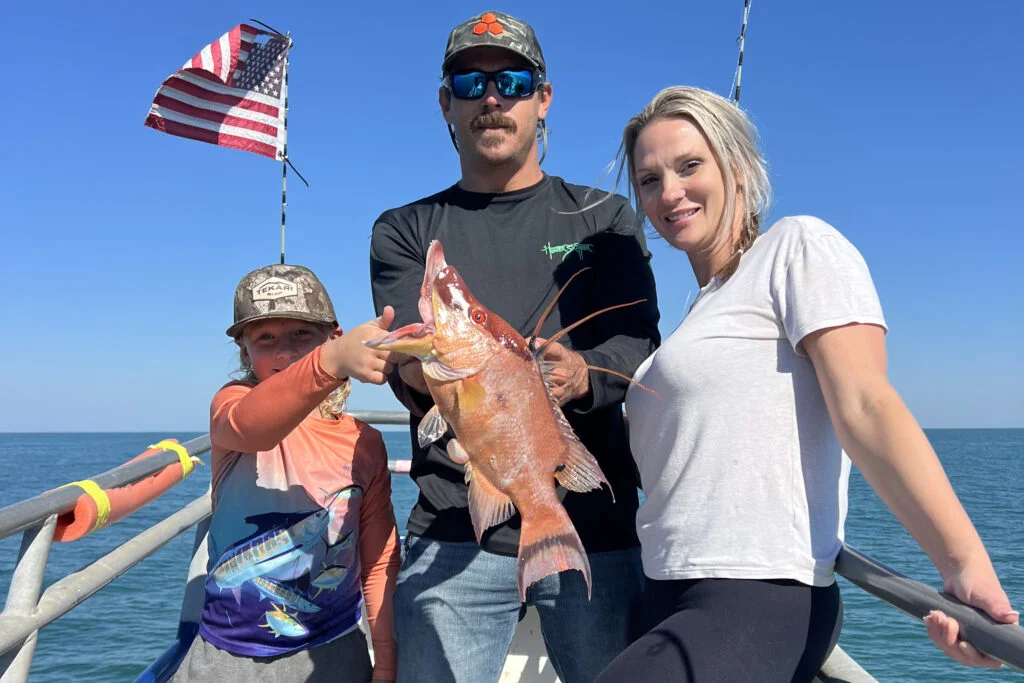
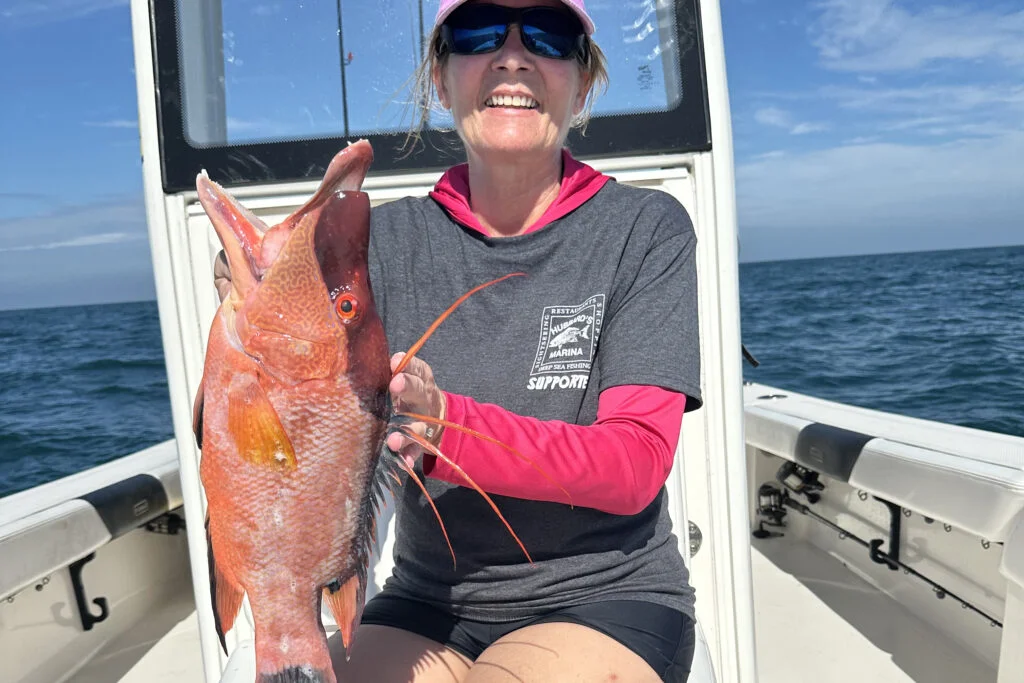
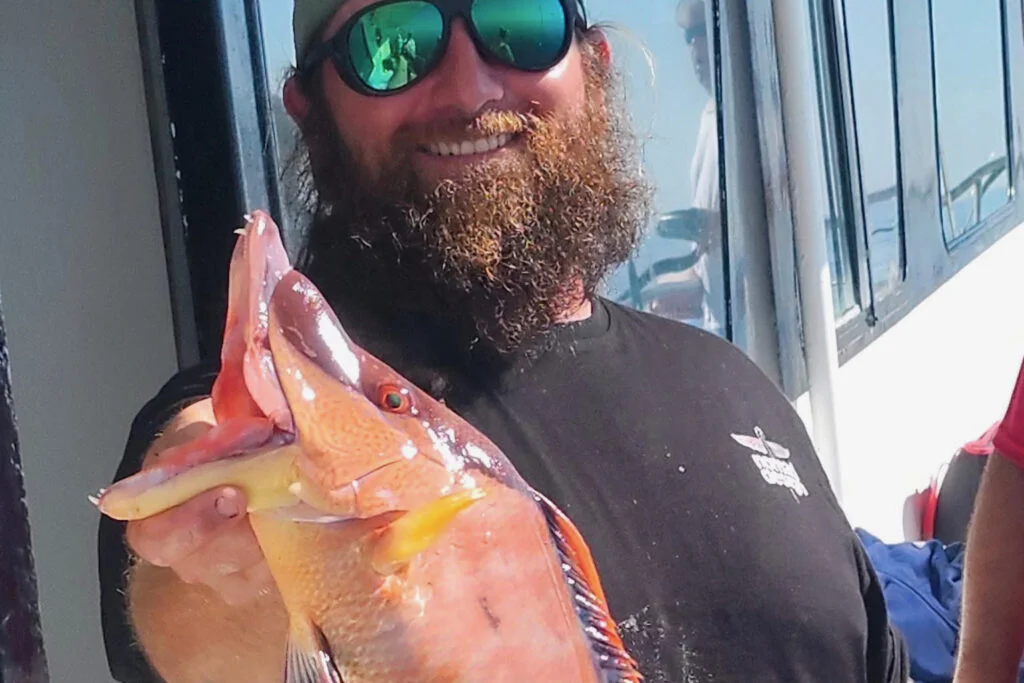
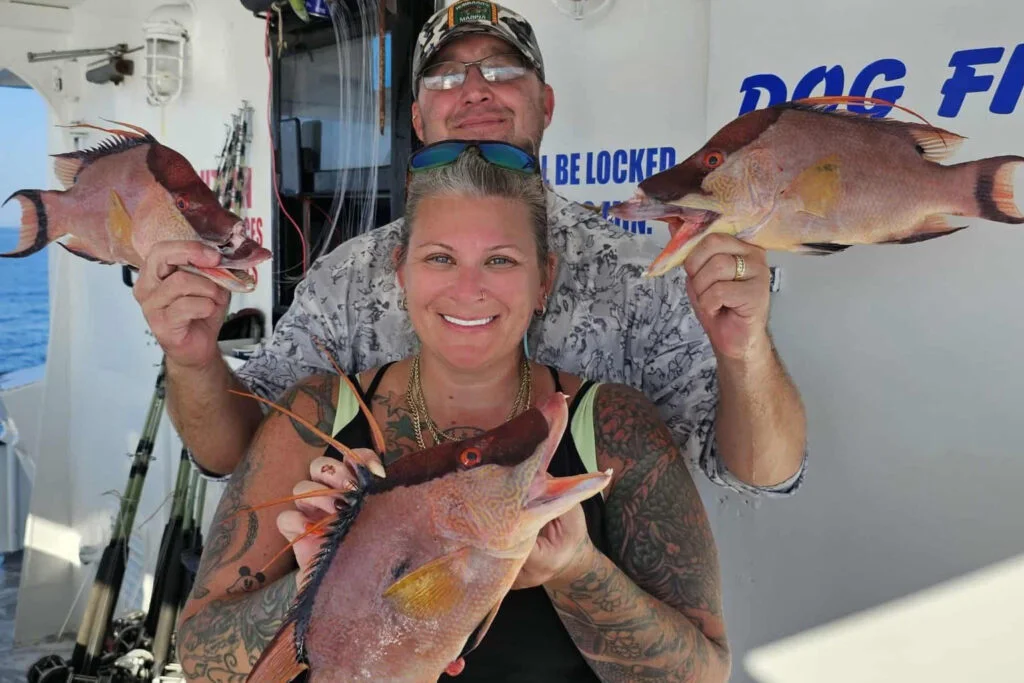
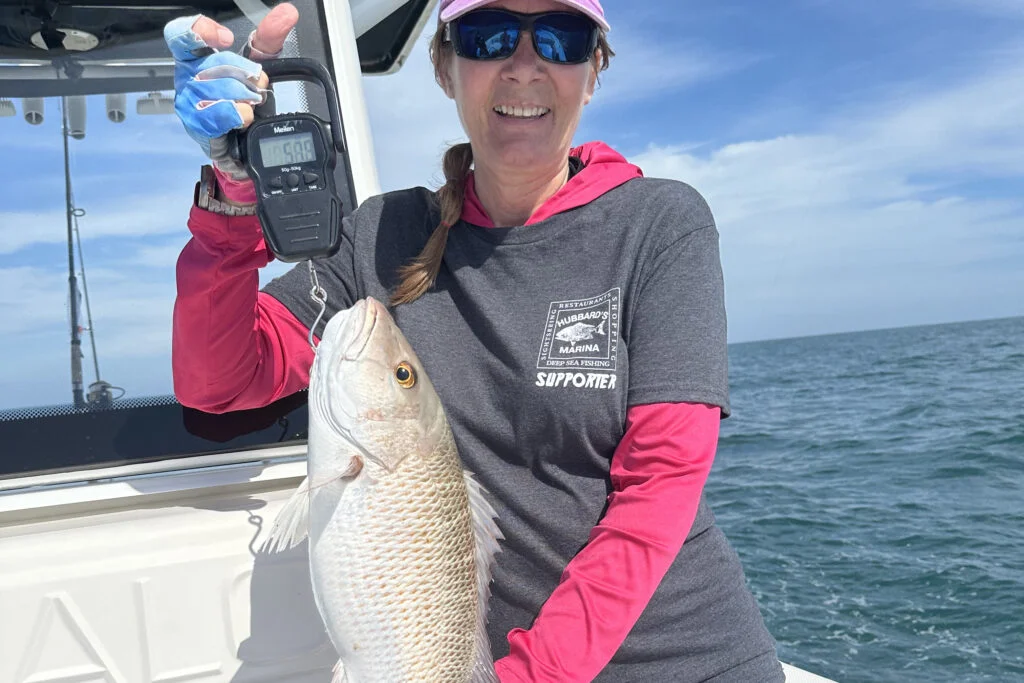
Spanish & Kings — Mackerel were thick along the beach runs and channel edges but have thinned out a lot. However, keep an eye out and watch birds and surface showers. Kings are still around in pulses; keep a flatline out and a pitch rod ready. Troll spoons or plugs to locate, then switch to live bait once you’re on them.
Hogfish — Cooling trends have fired up hogs on 40–70 ft smaller ledges, hard bottom and edges. The most consistent setup remains a long (10–15 ft) 30 lb fluoro topshot to 20–30 lb braid, knocker rig with 1–2 oz egg sinker, and a 3/0–4/0 hook, baited with live shrimp. Fish smaller ledges, swiss‑cheese hard bottom, and shell transitions. Be patient—porgies and grunts will nibble first, then the hogs slide in.
Lane Snapper — Solid in 60–100 ft. They’ll eat squid, cut threadfin, or live shrimp; the larger lanes lean toward shrimp and cleaner threadfin strips. Keep baits compact.
Mangrove Snapper — Hit‑or‑miss inshore of 70 ft, better nearer the deepest near‑shore contours. Small double‑snell rigs with smaller threadfin pieces on 30–40 lb leader will draw strikes when they’re finicky.
Red Grouper — Occasional near shore, more consistent as you creep deeper. Use frisky pinfish or bigger dead baits on 40-60lb leaders; expect to cull through shorts before stick‑worthy keepers.
Fishing Tips
- Red Grouper: Target the deepest near shore waters with big dead baits or solid live baits. Use 60 lb test and 7/0 hooks for best results.
- Red Snapper: Use big dead baits like whole squid and bonita strips with heavy tackle to focus on larger fish. Prime trips include the 12-hour extreme, 39-hour, and 44-hour trips.
- Scamp Grouper: Use small to medium pinfish and cut threadfin, especially while targeting mangrove snapper.
- Mangrove Snapper: Near shore, use live shrimp and small chunks of threadfin on 30-40 lb test with 3-4/0 hooks. Offshore, use bigger chunks of cut threadfin or medium pinfish on 40-60 lb test with 5-7/0 hooks.
- Vermillion Snapper: Start around 100 feet of water using cut squid or threadfin. These fish are aggressive and not leader-shy.
- Yellowtail Snapper: Use shrimp, cut squid, and threadfin.
- Pelagic Species: Keep flat lines and pitch rods ready for sailfish, kingfish, wahoo, tuna, and mahi mahi.
Offshore Fishing Report





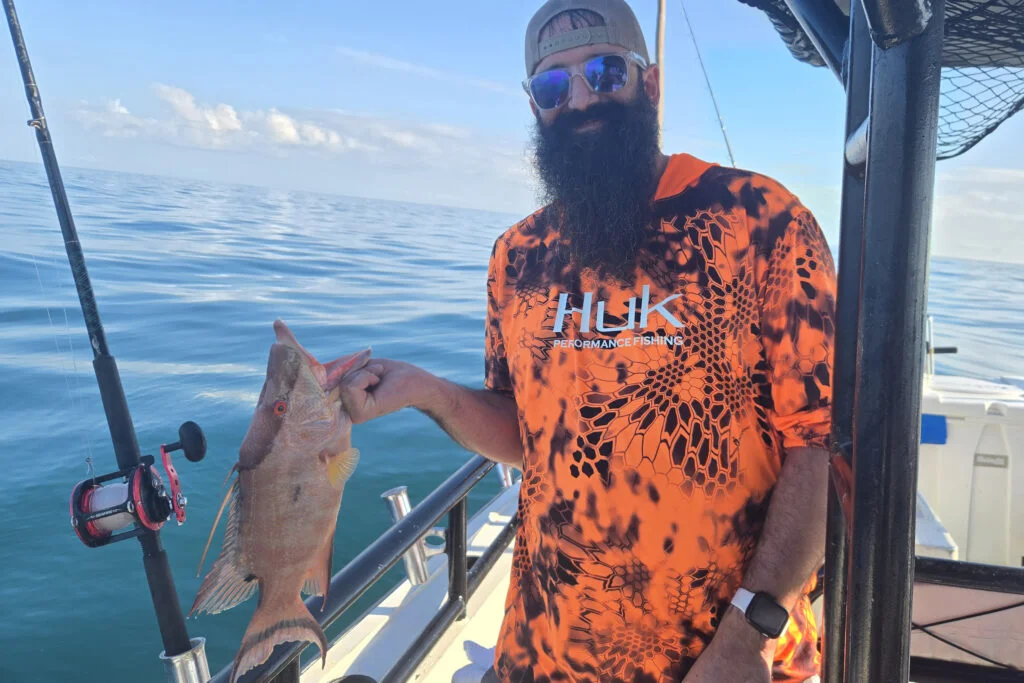
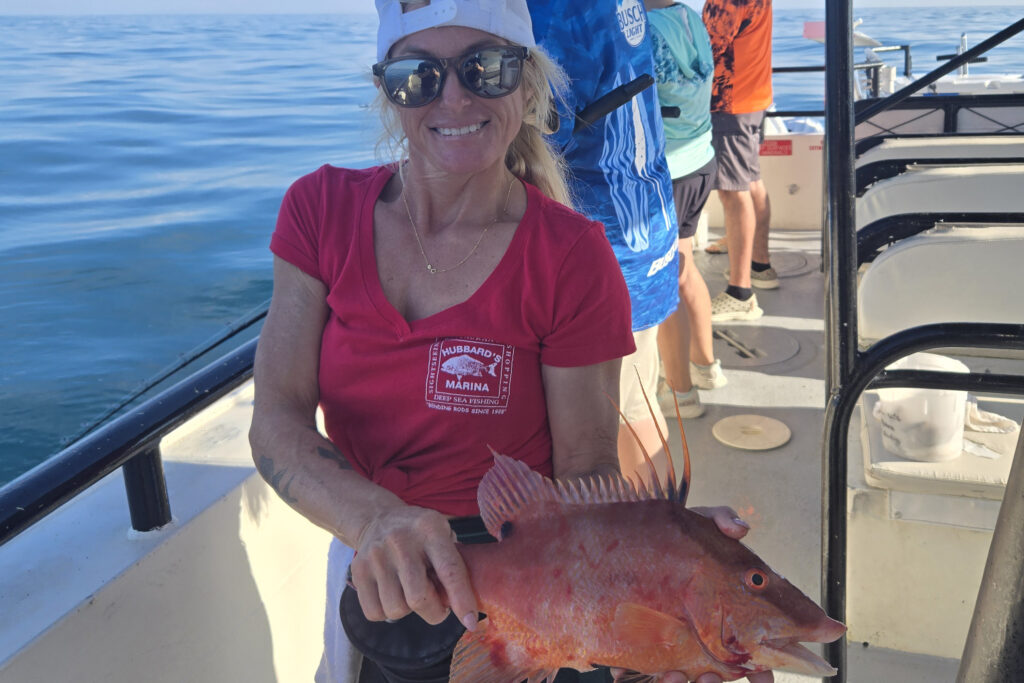
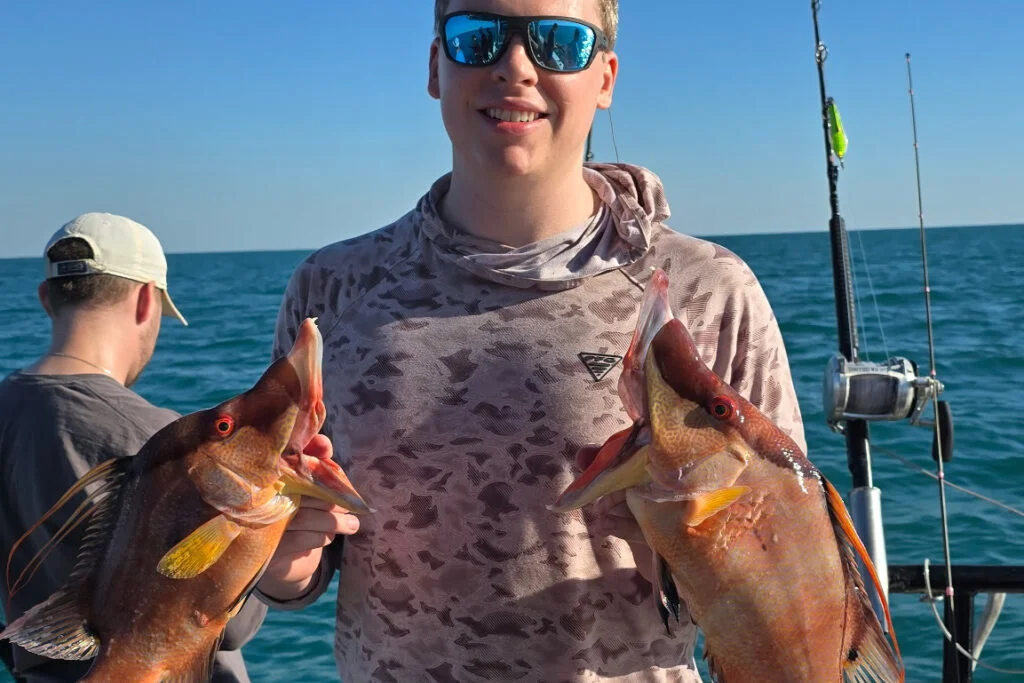
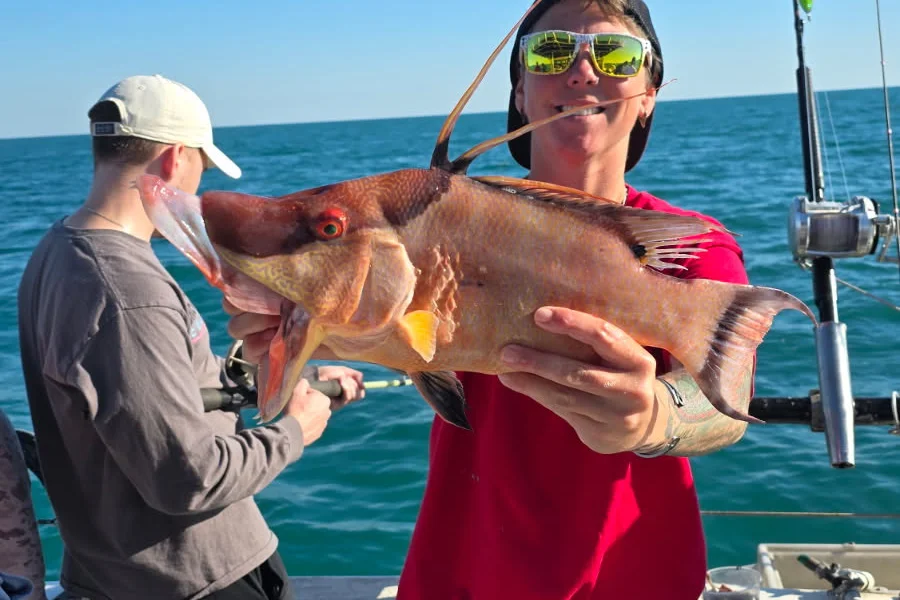
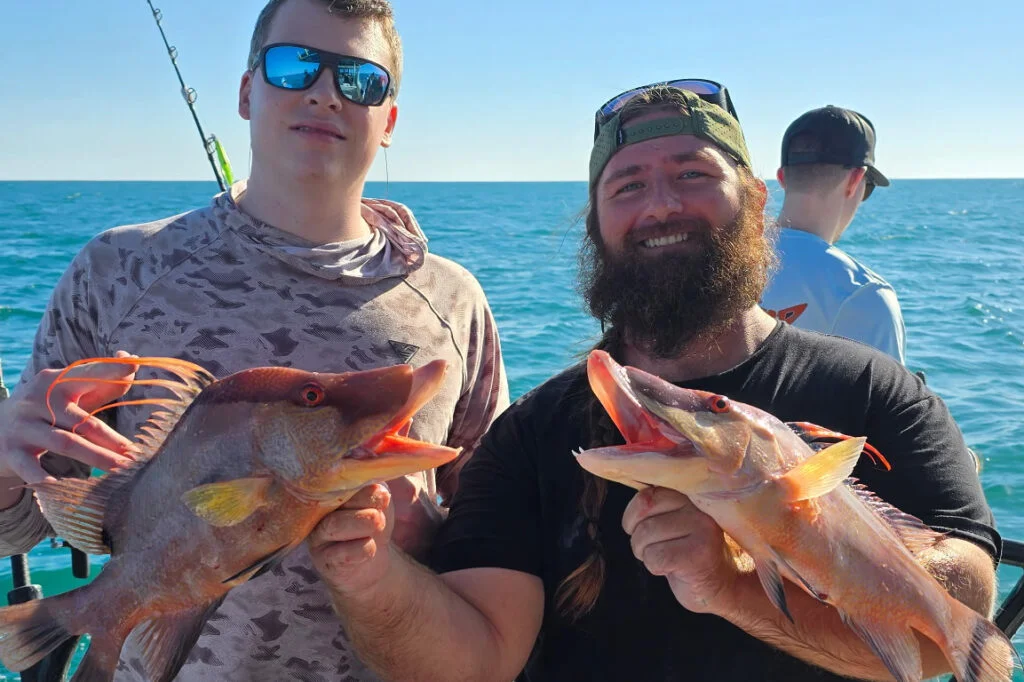

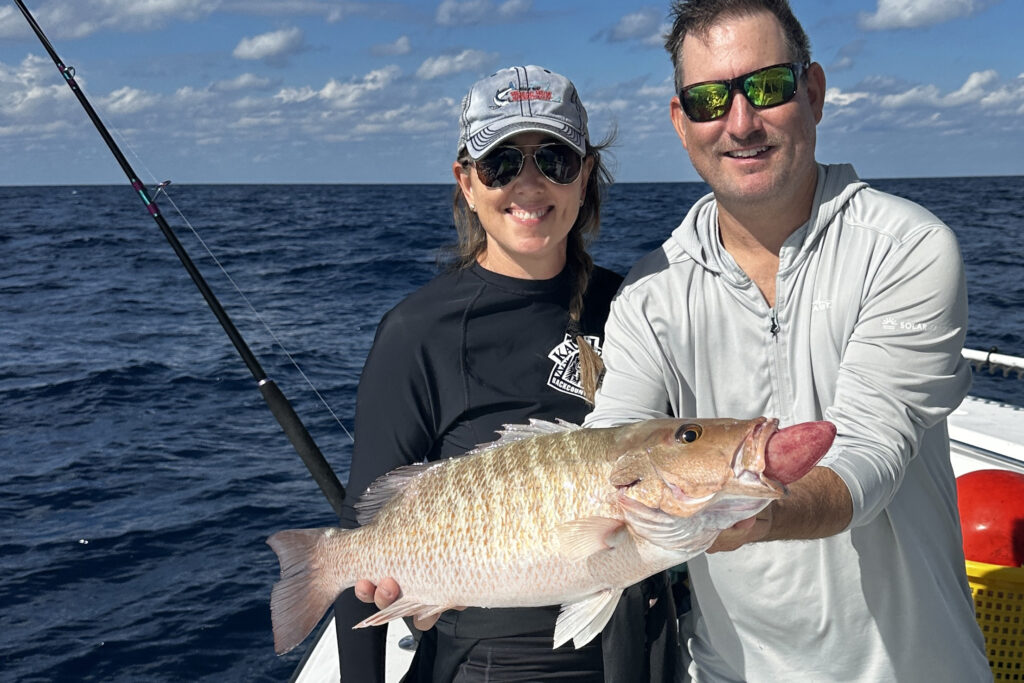
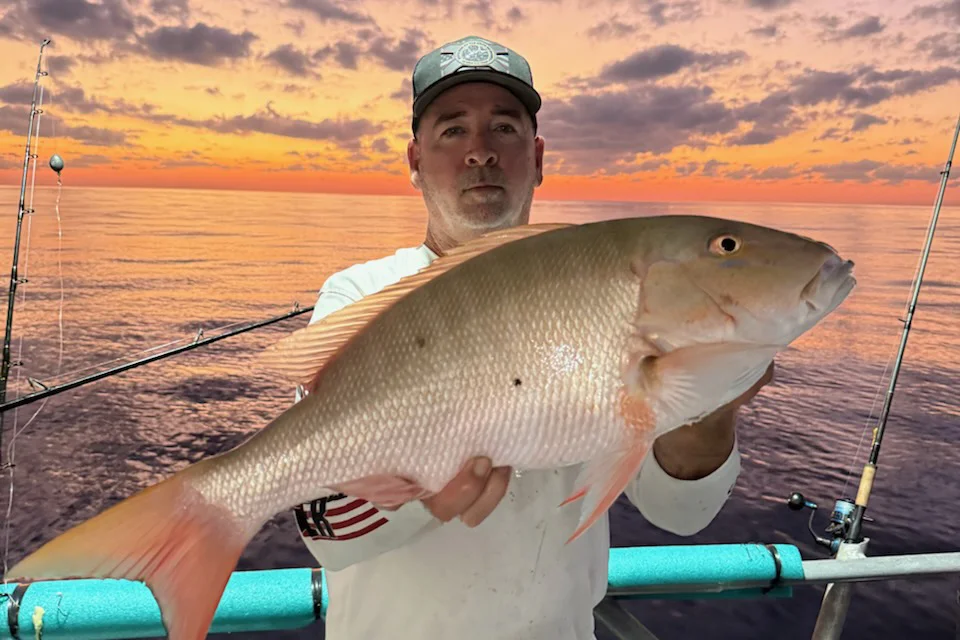
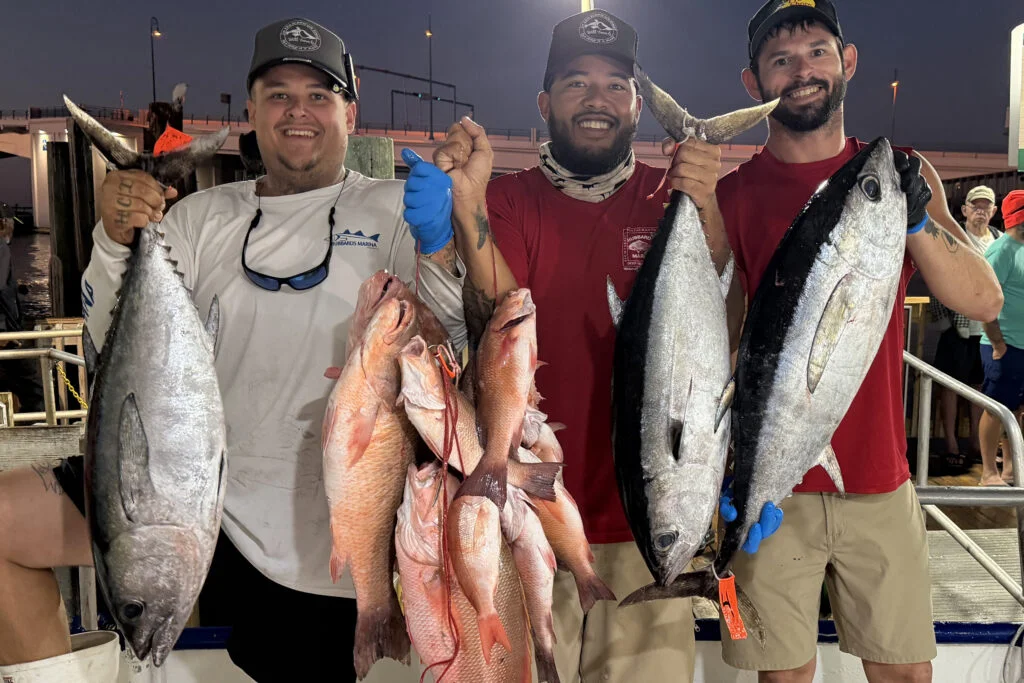
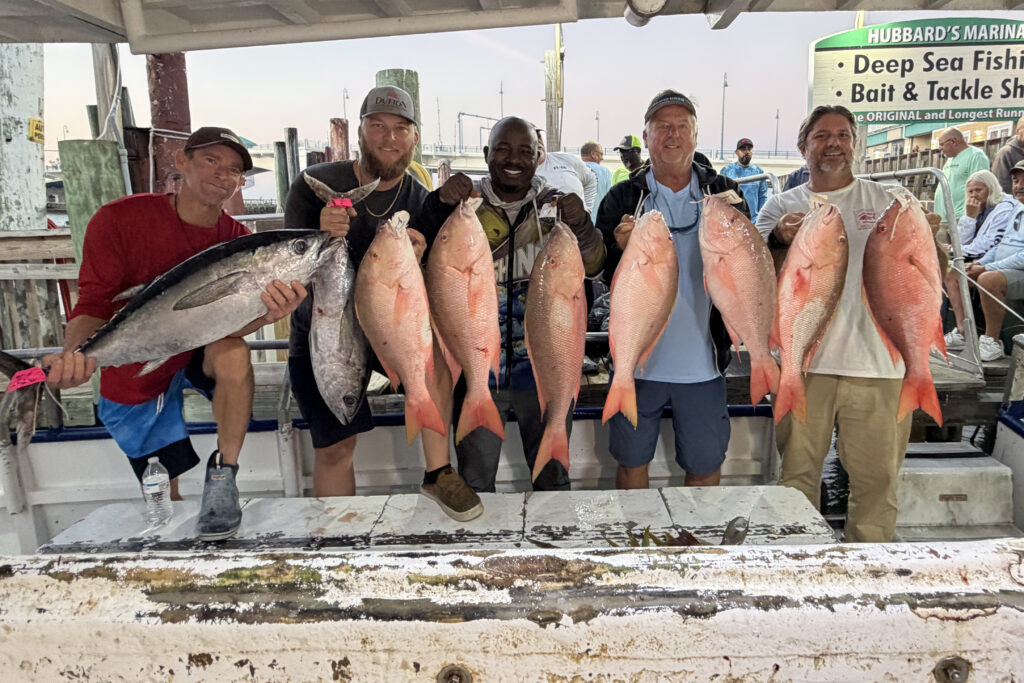

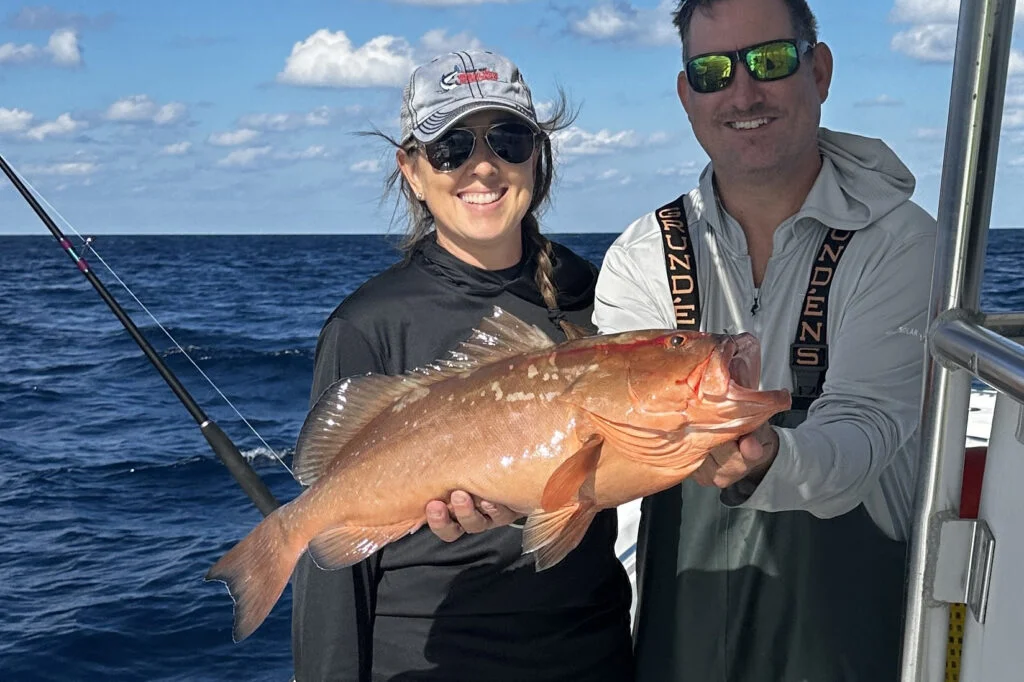
Red Grouper & Scamp — Work potholes, ledges, and broken hard bottom starting around the 100–140 ft band. Big dead baits (bonita strips, whole squid, boston mackerel) and lively 5–6″ pinfish shine. Match hook size to bait (6/0–9/0) on 60–80 lb leader. Scamp favor medium pinfish and a slightly subtler presentation—don’t overlook slow‑pitch jigs.
Mangrove & Yellowtail — Mangos are steady with quality fish—double‑snell cut threadfin on 40 lb is the workhorse, but live pinfish cherry‑pick the studs. Yellowtails are showing on the deeper sets; lighten leaders (30–40 lb), use small squid strips or trimmed threadfin.
Muttons — The mutton bite has been strong by central west florida standards—target deep water ledges, peaks and rock piles with a fish‑finder rig, 40–50 lb leader, and medium pinfish or cut threadfins.
Triggers, Vermillions, Porgies, Almacos — Triggers want 2″ chew‑strips of squid or bonita on smaller hooks; vermillions and porgies are eager on cut squid or threadfin. Almacos mix in over higher relief—jigs or live baits both work.
Pelagics — Keep a flatline or two out while you bottom fish—blackfin, kings, the odd mahi or wahoo have been sliding through. A flashy jig or live threadfin is tough to beat when they pop. Lately its been a solid showing of blackfin tuna this past week.
Don’t forget, that we have some great videos on our fishing tips and tricks page here to show you how to target and rig for almost any species-> https://www.hubbardsmarina.com/fishing-tips/
Remember that when fishing in deeper nearshore and offshore federal waters, the Descend Act requires you to have a descending device or venting tool “rigged and ready.” If you know how to use a venting tool, keep it prepared. If not, here’s some helpful advice: https://bit.ly/3L5HTnv. Using a descending device is straightforward and doesn’t require as much precision or practice as venting. Return em’ Right has a training course only takes about 10-15 minutes, and you can learn valuable techniques to protect our offshore fishery. Spread the word by visiting: https://returnemright.org/.
TERMS OF REFERENCE-
Inshore: This covers the areas from the inner bays, through the bridges, and right up to the beaches.
Near Shore: This includes the coastal waters from the beaches up to twenty miles offshore, or up to a depth of 100 feet.
Offshore: This extends from twenty miles offshore or from a depth of 100 feet and beyond.
For more fishing reports, photos, videos, and other content, check out Hubbard’s Marina on Facebook, Instagram, YouTube, TikTok, Twitter, Pinterest, or Snapchat by searching for @HubbardsMarina. Remember our family motto: “If you’re too busy to go fishing, you’re just too busy!” Thank you for reading our report.
Capt. Dylan Hubbard, Hubbard’s Marina
Phone or text: (727) 393-1947
Website: Hubbard’s Marina
If you’re not seeing the latest article, try clearing your browser cache.
You can search “how to clear browser cache” on Google for quick steps.

